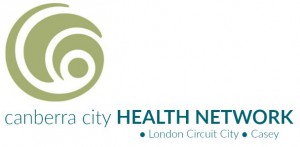What Is Dry Needling?
A number of our practitioners at Canberra City Health Network have additional training in a technique called Dry Needling. This popular technique involves the use of an acupuncture-type needle that is inserted into the ‘trigger point’ of the muscle. The aim is to achieve a local twitch response to release muscle tension and pain. A trigger point is a tender spot in a tight band of muscle that causes pain when pressed or squeezed.
Dry needling helps to reduce pain by releasing muscle shortening. It is now well-researched that the ‘twitch’ response in the muscle during dry needling is associated with the muscle relaxing and stopping the pull on adjacent areas.
Book Your Dry Needling Appointment
Interested in what dry needling can do for you? Get in touch with our team to find out more, or book your appointment today.
What Does Dry Needling Help With?
Dry needling can help with many musculoskeletal complaints. Our trained therapists can determine whether dry needling is suitable for you. It is a technique that works well in conjunction with Osteopathy, Physiotherapy and Remedial Massage Therapy.
Dry needling can help to provide relief and treatment for:
- Muscle pain: Dry needling can help alleviate muscle pain and soreness caused by injury, overuse, or poor posture. It can also help improve the range of motion and muscle function.
- Joint pain: Conditions like arthritis, tendonitis, or bursitis can cause joint pain and discomfort. Dry needling is a great treatment option for providing relief from joint pain and tendon injuries.
- Headaches: Tension headaches and migraines can benefit from dry needling as this technique releases trigger points in the neck, shoulders, and back.
- Back pain: Dry needling can help alleviate lower back pain by releasing trigger points in the muscles of the back and hips.
- Sports injuries: Common sports-related injuries like sprains, strains, and muscle tears can benefit from dry needling treatment.
Does Dry Needling Hurt?
The needles used are very thin, and you may or may not feel the needle enter your skin. If the target muscle is shortened and hypersensitive you will feel a cramping or twitch sensation.
This is very short-lasting and patients soon learn to recognise this sensation as therapeutic as it is followed by a feeling of pain relief and muscle relaxation.
The most common side effect is temporary muscle soreness after the treatment. This typically lasts for a day or two and your clinician will instruct you on minimising this.
There are other less common side effects such as bruising. If you have any questions about side effects, don’t hesitate to ask your physician prior to treatment.
How Is It Different From Acupuncture?
There’s a common misconception that dry needling and acupuncture are synonymous.
While they may share some similar qualities, these two targeted treatment options are actually very different, and each is used to treat and prevent different conditions.
Acupuncture is an ancient Chinese medical practice that is based on the concept of Qi (pronounced “chee”), which is the flow of energy through the body’s meridians or pathways. The goal of acupuncture is to balance the body’s energy flow and promote overall health and well-being. Acupuncture needles are typically inserted into specific points along the meridians, which can be far away from the site of pain or dysfunction.
Dry needling, on the other hand, is a modern Western medical technique that is based on the principles of anatomy and physiology. Dry needling releases trigger points or tight bands of muscle fibres that cause pain and dysfunction. The needles are typically inserted directly into the trigger points, which are often located near or within the site of pain or dysfunction.
Another difference between acupuncture and dry needling is the depth of needle insertion. In acupuncture, the needles are often inserted superficially or closer to the skin’s surface. Dry needling requires deeper needle insertion into the muscle tissue.
[Ref: Australian Acupuncture & Chinese Medicine Association LTD and Global Education of Manual Therapists]
